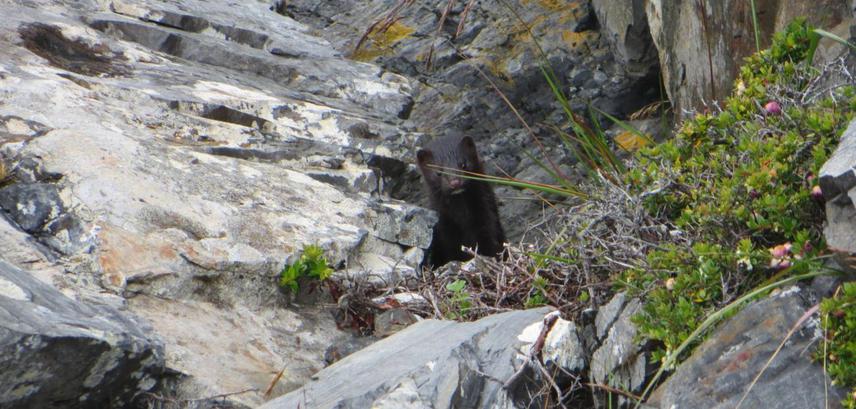Ramiro Daniel Crego
In this project I aim to determine how the invasive American mink (Neovison vison) adapts to a pristine-island ecosystem on Southern Chile, and to assess how mink impact native biodiversity.

Mink.
Invasive species are the second driver of biodiversity loss. They can affect—beyond the distribution, abundance, behaviour, and evolutionary history of several native species—even the structure and functioning of entire ecosystems. Islands are the most vulnerable regions to invasions because the evolutionary isolation generally results in a lack of behavioural responses to predation by the local biota. Navarino Island is located within the Cape Horn Biosphere Reserve (CHBR) in southern Chile. The CHBR is recognized as one of the last pristine regions of the world. However, invasive species threaten local biodiversity. The American mink (Neovison vison) is a mid-sized, semi-aquatic mustelid native to North America that arrived at the CHBR in the late 1990s. American mink have no competitors or natural enemies in Navarino, establishing them as a new top predator in this fragile ecosystem, threatening local biodiversity. All previous mink studies in the region focused on freshwater systems or along coast lines and little is known about mink ecology and its predatory effects on forest habitats. Given mink’s ecological plasticity and the low abundance of freshwater prey in Navarino Island (the natural source of food for mink), I expect that the mink will expand its niche into the forest to prey on native populations of forest bird and small rodents, away from rivers and coastlines. I will use camera traps and occupancy models to investigate mink relationship with occupancy, habitat types, and prey abundance.
Also, I will assess mink’s diet and prey species behavioural responses to this novel predator. By studying American mink ecology in this island I expect to better understand how they adapt to new environmental conditions, which species are being affected by its predation, and how these prey species respond to the new predatory pressure. The information generated will allow me to redesign a long-term monitoring program, complementing current management actions that will permit local managers to improve their efforts to monitor and control the mink population on the island, ensuring protection to the local biodiversity. Also, this project will provide training opportunities to Chilean students willing to learn field techniques and data analyses in ecology. At the end, these students will become the future generation of scientists facing conservation problems in the region.